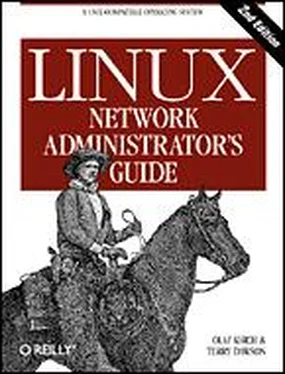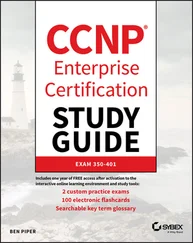Linux may be purchased on CD-ROM from an increasing number of software vendors. If your local computer store doesn't have it, perhaps you should ask them to stock it! Most of the popular distributions can be obtained on CD-ROM. Some vendors produce products containing multiple CD-ROMs, each of which provides a different Linux distribution. This is an ideal way to try a number of different distributions before you settle on your favorite one.
In the past, one of the problems that afflicted Linux distributions, as well as the packages of software running on Linux, was the lack of a single accepted filesystem layout. This resulted in incompatibilities between different packages, and confronted users and administrators with the task of locating various files and programs.
To improve this situation, in August 1993, several people formed the Linux File System Standard Group (FSSTND). After six months of discussion, the group created a draft that presents a coherent file sytem structure and defines the location of the most essential programs and configuration files.
This standard was supposed to have been implemented by most major Linux distributions and packages. It is a little unfortunate that, while most distributions have made some attempt to work toward the FSSTND, there is a very small number of distributions that has actually adopted it fully. Throughout this book, we will assume that any files discussed reside in the location specified by the standard; alternative locations will be mentioned only when there is a long tradition that conflicts with this specification.
The Linux FSSTND continued to develop, but was replaced by the Linux File Hierarchy Standard (FHS) in 1997. The FHS addresses the multi-architecture issues that the FSSTND did not. The FHS can be obtained from the Linux documentation directory of all major Linux FTP sites and their mirrors, or at its home site at http://www.pathname.com/fhs/. Daniel Quinlan, the coordinator of the FHS group, can be reached at quinlan@transmeta.com.
The vast number of different Linux distributions, while providing lots of healthy choice for Linux users, has created a problem for software developers - particularly developers of non-free software.
Each distribution packages and supplies certain base libraries, configuration tools, system applications, and configuration files. Unfortunately, differences in their versions, names, and locations make it very difficult to know what will exist on any distribution. This makes it hard to develop binary applications that will work reliably on all Linux distribution bases.
To help overcome this problem, a new project sprang up called the "Linux Standard Base." It aims to describe a standard base distribution that complying distributions will use. If a developer designs an application to work against the standard base platform, the application will work, and be portable to, any complying Linux distribution.
You can find information on the status of the Linux Standard Base project at its home web site at http://www.linuxbase.org/.
If you're concerned about interoperability, particularly of software from commercial vendors, you should ensure that your Linux distribution is making an effort to participate in the standardization project.
When Olaf joined the Linux Documentation Project in 1992, he wrote two small chapters on UUCP and smail, which he meant to contribute to the System Administrator's Guide. Development of TCP/IP networking was just beginning, and when those "small chapters" started to grow, he wondered aloud whether it would be nice to have a Networking Guide. "Great!" everyone said. "Go for it!" So he went for it and wrote the first version of the Networking Guide, which was released in September 1993.
Olaf continued work on the Networking Guide and eventually produced a much enhanced version of the guide. Vince Skahan contributed the original sendmail mail chapter, which was completely replaced in this edition because of a new interface to the sendmail configuration.
The version of the guide that you are reading now is a revision and update prompted by O'Reilly& Associates and undertaken by Terry Dawson. [2] Terry Dawson can be reached at terry@linux.org.au.
Terry has been an amateur radio operator for over 20 years and has worked in the telecommunications industry for over 15 of those. He was co-author of the original NET-FAQ, and has since authored and maintained various networking-related HOWTO documents. Terry has always been an enthusiastic supporter of the Network Administrators Guide project, and added a few new chapters to this version describing features of Linux networking that have been developed since the first edition, plus a bunch of changes to bring the rest of the book up to date.
The exim chapter was contributed by Philip Hazel, [3] Philip Hazel can be reached at ph10@cus.cam.ac.uk.
who is a lead developer and maintainer of the package.
The book is organized roughly along the sequence of steps you have to take to configure your system for networking. It starts by discussing basic concepts of networks, and TCP/IP-based networks in particular. It then slowly works its way up from configuring TCP/IP at the device level to firewall, accounting, and masquerade configuration, to the setup of common applications such as rlogin and friends, the Network File System, and the Network Information System. This is followed by a chapter on how to set up your machine as a UUCP node. Most of the remaining sections is dedicated to two major applications that run on top of TCP/IP and UUCP: electronic mail and news. A special chapter has been devoted to the IPX protocol and the NCP filesystem, because these are used in many corporate environments where Linux is finding a home.
The email part features an introduction to the more intimate parts of mail transport and routing, and the myriad of addressing schemes you may be confronted with. It describes the configuration and management of exim, a mail transport agent ideal for use in most situations not requiring UUCP, and sendmail, which is for people who have to do more complicated routing involving UUCP.
The news part gives you an overview of how Usenet news works. It covers INN and C News, the two most widely used news transport software packages at the moment, and the use of NNTP to provide newsreading access to a local network. The book closes with a chapter on the care and feeding of the most popular newsreaders on Linux.
Of course, a book can never exhaustively answer all questions you might have. So if you follow the instructions in this book and something still does not work, please be patient. Some of your problems may be due to mistakes on our part (see the section ", later in this Preface), but they also may be caused by changes in the networking software. Therefore, you should check the listed information resources first. There's a good chance that you are not alone with your problems, so a fix or at least a proposed workaround is likely to be known. If you have the opportunity, you should also try to get the latest kernel and network release from one of the Linux FTP sites or a BBS near you. Many problems are caused by software from different stages of development, which fail to work together properly. After all, Linux is a "work in progress."
The Official Printed Version
In Autumn 1993, Andy Oram, who had been around the LDP mailing list from almost the very beginning, asked Olaf about publishing this book at O'Reilly& Associates. He was excited about this book, never having imagined that it would become this successful. He and Andy finally agreed that O'Reilly would produce an enhanced Official Printed Version of the Networking Guide, while Olaf retained the original copyright so that the source of the book could be freely distributed. This means that you can choose freely: you can get the various free forms of the document from your nearest Linux Documentation Project mirror site and print it out, or you can purchase the official printed version from O'Reilly.
Читать дальше



![Andrew Radford - Linguistics An Introduction [Second Edition]](/books/397851/andrew-radford-linguistics-an-introduction-second-thumb.webp)








